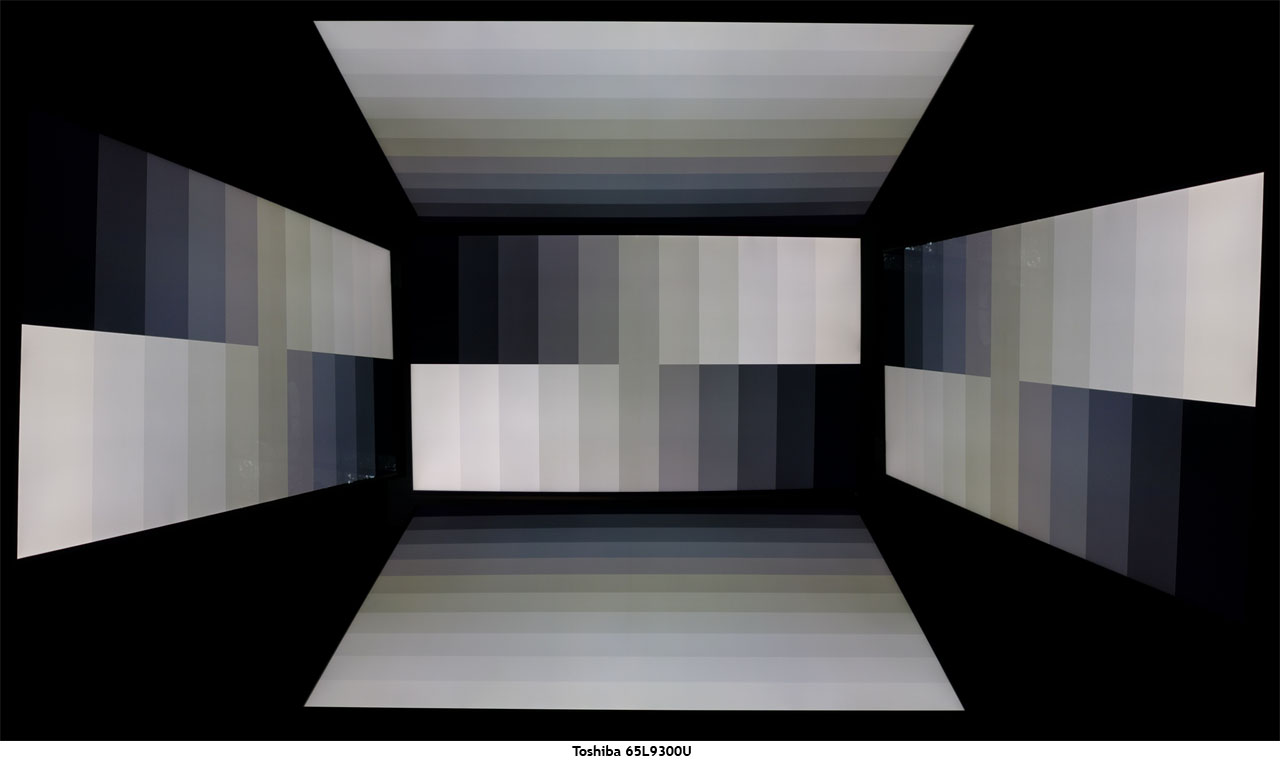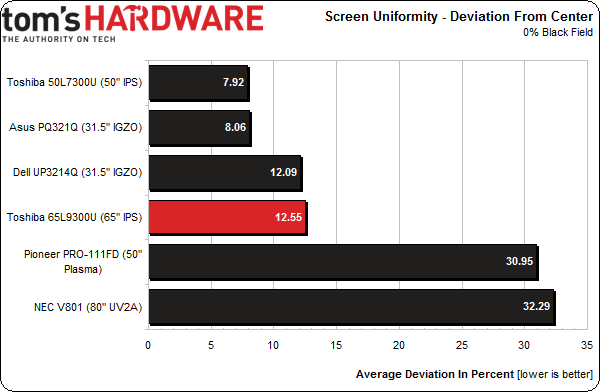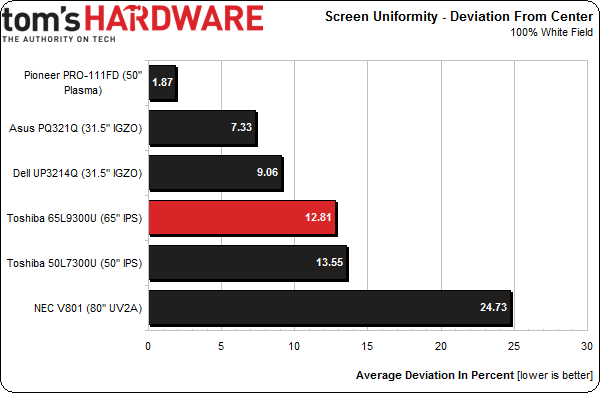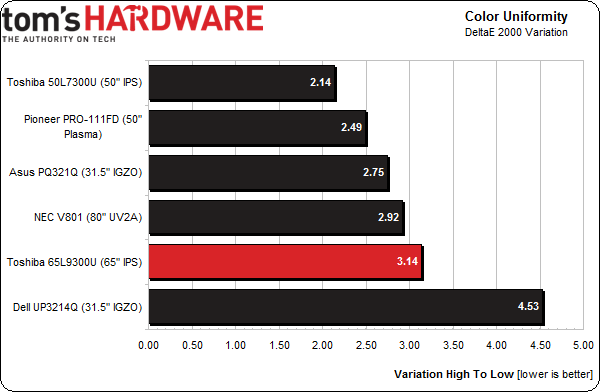Toshiba 65L9300U: A 4K HDTV With HDMI 2.0 Support
With Ultra HD monitors becoming more prolific, we thought it was time to check out a 4K HDTV. Toshiba sent us its 65-inch L9300U LED panel. This TV offers 3D and cloud features in addition to a high pixel count. We put it through its paces in this review.
Results: Viewing Angles And Uniformity
Off-axis image quality is very important in any large-screen HDTV. Since only one person can sit in the center seat, everyone else on the couch is forced to watch at an angle. Most manufacturers like claiming large viewing angles of 170 degrees or more. However, 45 degrees is realistic to us. Given a 65-inch LCD panel viewed at ten feet, getting five people in front of it is probably a practical limit if everyone wants a decent picture.
With that said, the 65L9300U looks good at the edge of our 45-degree cone. There is almost no reduction in brightness, and the color shift is limited to medium brightness levels only. We see a slight green hue in the 30- to 50-percent bars of the side-to-side view. This is a great TV for family viewing. A larger screen would be even better, and Toshiba obliges by offering an 84-inch model in the L9300U line.
Screen Uniformity: Luminance
To measure screen uniformity, zero- and 100-percent full-field patterns are used, and nine points are sampled. In a change from previous reviews, we’re now comparing the results to other monitors we’ve measured. First, we establish a baseline measurement at the center of each screen. Then the surrounding eight points are measured and their values expressed as a percentage of the baseline, either above or below. Those numbers get averaged. Remember that we're only able to test the sample each vendor sends us. Other examples of the same monitor can measure differently.
First up is black field uniformity.
Our eyes tell us that Toshiba's 65L9300U looks good, though our meter clarifies that the bottom edge of the screen is slightly brighter than the rest of the panel. This is typical of large edge-lit LCD/LED displays. Fortunately, there isn’t any visible blotchiness or corner brightness like we’ve seen on a few other HDTVs.
Usually the white field uniformity is better than the black. Here it's almost exactly the same, though. The bottom edge is the culprit again, reading slightly brighter than the rest of the screen area. On the bright side, the error is almost imperceptible.
Screen Uniformity: Color
To measure color uniformity, we display an 80-percent white field and measure the Delta E error of the same nine points on the screen. Then we subtract the lowest value from the highest to arrive at the result. A smaller number means a display is more uniform. Any value below three means a variation that is invisible to the naked eye.
Get Tom's Hardware's best news and in-depth reviews, straight to your inbox.
Our test sample suffers from a subtle green tint across the bottom of the screen in an 80-percent white field pattern. It's not something anyone is likely to spot when viewing regular content. And another 65L9300U might very well measure better.
Current page: Results: Viewing Angles And Uniformity
Prev Page Results: Color Gamut And Performance Next Page Results: Pixel Response And Input Lag
Christian Eberle is a Contributing Editor for Tom's Hardware US. He's a veteran reviewer of A/V equipment, specializing in monitors. Christian began his obsession with tech when he built his first PC in 1991, a 286 running DOS 3.0 at a blazing 12MHz. In 2006, he undertook training from the Imaging Science Foundation in video calibration and testing and thus started a passion for precise imaging that persists to this day. He is also a professional musician with a degree from the New England Conservatory as a classical bassoonist which he used to good effect as a performer with the West Point Army Band from 1987 to 2013. He enjoys watching movies and listening to high-end audio in his custom-built home theater and can be seen riding trails near his home on a race-ready ICE VTX recumbent trike. Christian enjoys the endless summer in Florida where he lives with his wife and Chihuahua and plays with orchestras around the state.



